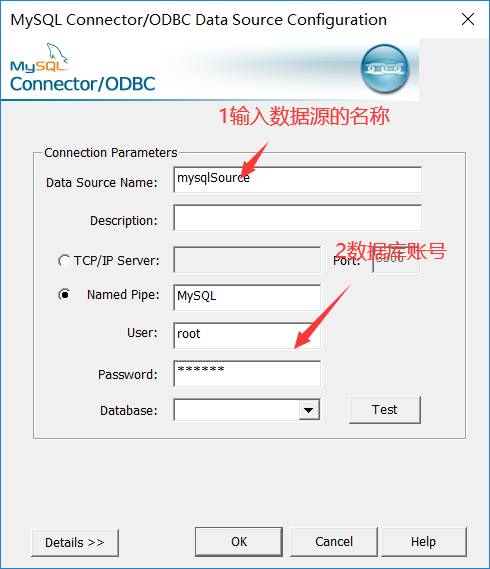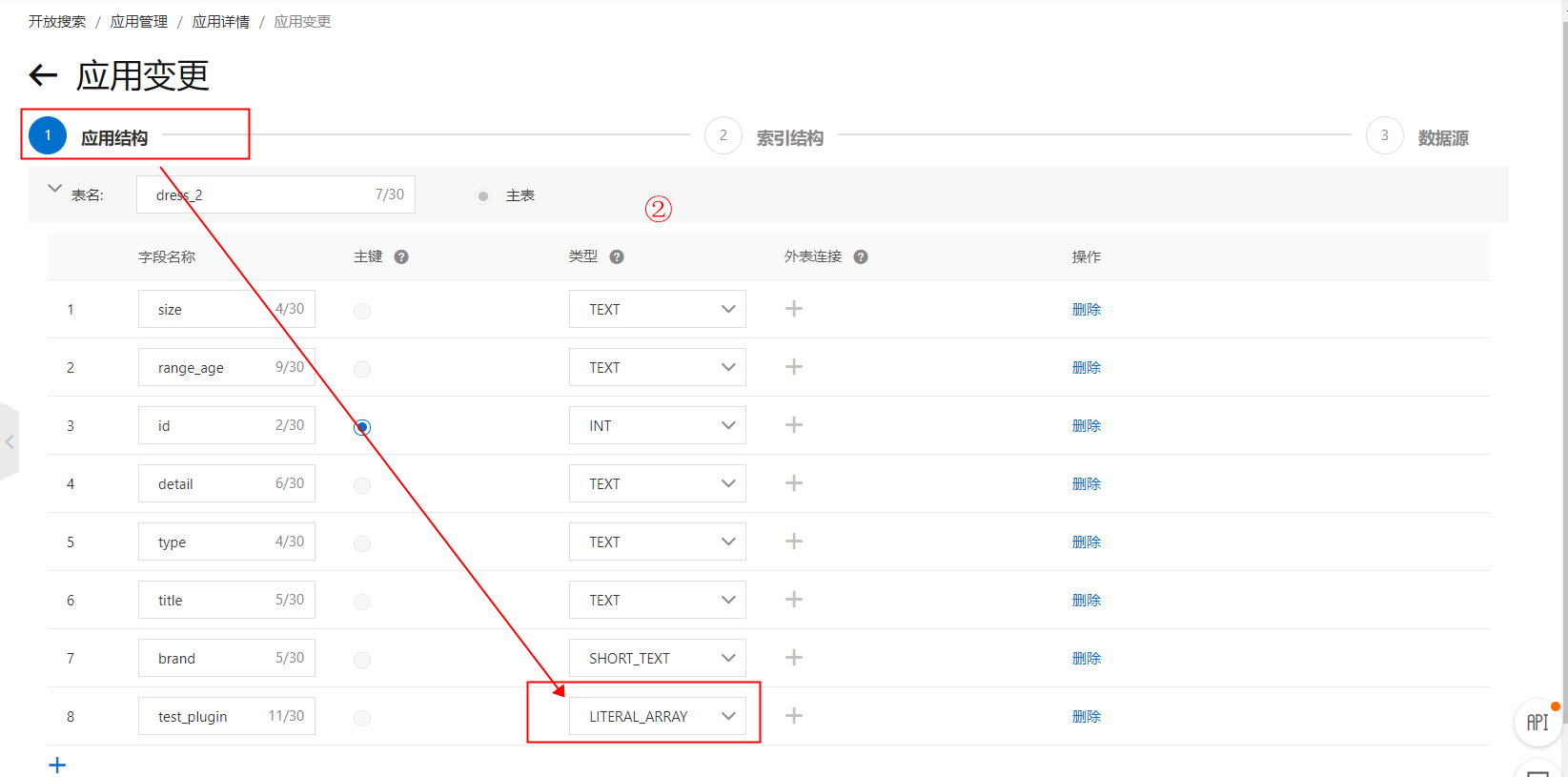出处:
热门推荐
同一个项目有时会涉及到多个数据库,也就是多数据源。多数据源又可以分为两种情况:
1)两个或多个数据库没有相关性,各自独立,其实这种可以作为两个项目来开发。比如在游戏开发中一个数据库是平台数据库springboot多数据源配置,其它还有平台下的游戏对应的数据库;
2)两个或多个数据库是master-slave的关系,比如有mysql搭建一个 master-master,其后又带有多个slave;或者采用MHA搭建的master-slave复制;
目前我所知道的 Spring 多数据源的搭建大概有两种方式,可以根据多数据源的情况进行选择。
1. 采用spring配置文件直接配置多个数据源
比如针对两个数据库没有相关性的情况,可以采用直接在spring的配置文件中配置多个数据源,然后分别进行事务的配置,如下所示:
<context:component-scan base-package="net.aazj.service,net.aazj.aop" /><context:component-scan base-package="net.aazj.aop" /><context:property-placeholder location="classpath:config/db.properties" /><bean name="dataSource" class="com.alibaba.druid.pool.DruidDataSource" init-method="init" destroy-method="close"><property name="url" value="${jdbc_url}" /><property name="username" value="${jdbc_username}" /><property name="password" value="${jdbc_password}" /><property name="initialSize" value="0" /><property name="maxActive" value="20" /><property name="maxIdle" value="20" /><property name="minIdle" value="0" /><property name="maxWait" value="60000" /></bean><bean id="sqlSessionFactory" class="org.mybatis.spring.SqlSessionFactoryBean"><property name="dataSource" ref="dataSource" /><property name="configLocation" value="classpath:config/mybatis-config.xml" /><property name="mapperLocations" value="classpath*:config/mappers/**/*.xml" /></bean><bean id="transactionManager" class="org.springframework.jdbc.datasource.DataSourceTransactionManager"><property name="dataSource" ref="dataSource" /></bean><tx:annotation-driven transaction-manager="transactionManager" /><bean class="org.mybatis.spring.mapper.MapperScannerConfigurer"><property name="basePackage" value="net.aazj.mapper" /><property name="sqlSessionFactoryBeanName" value="sqlSessionFactory"/></bean><aop:aspectj-autoproxy/><bean name="dataSource_2" class="com.alibaba.druid.pool.DruidDataSource" init-method="init" destroy-method="close"><property name="url" value="${jdbc_url_2}" /><property name="username" value="${jdbc_username_2}" /><property name="password" value="${jdbc_password_2}" /><property name="initialSize" value="0" /><property name="maxActive" value="20" /><property name="maxIdle" value="20" /><property name="minIdle" value="0" /><property name="maxWait" value="60000" /></bean><bean id="sqlSessionFactory_slave" class="org.mybatis.spring.SqlSessionFactoryBean"><property name="dataSource" ref="dataSource_2" /><property name="configLocation" value="classpath:config/mybatis-config-2.xml" /><property name="mapperLocations" value="classpath*:config/mappers2/**/*.xml" /></bean><bean id="transactionManager_2" class="org.springframework.jdbc.datasource.DataSourceTransactionManager"><property name="dataSource" ref="dataSource_2" /></bean><tx:annotation-driven transaction-manager="transactionManager_2" /><bean class="org.mybatis.spring.mapper.MapperScannerConfigurer"><property name="basePackage" value="net.aazj.mapper2" /><property name="sqlSessionFactoryBeanName" value="sqlSessionFactory_2"/></bean>
如上所示,我们分别配置了两个 dataSource,两个sqlSessionFactory,两个transactionManager,以及关键的地方在于MapperScannerConfigurer 的配置——使用sqlSessionFactoryBeanName属性,注入不同的sqlSessionFactory的名称,这样的话,就为不同的数据库对应的 mapper 接口注入了对应的 sqlSessionFactory。
需要注意的是,多个数据库的这种配置是不支持分布式事务的,也就是同一个事务中,不能操作多个数据库。这种配置方式的优点是很简单,但是却不灵活。对于master-slave类型的多数据源配置而言不太适应,master-slave性的多数据源的配置,需要特别灵活,需要根据业务的类型进行细致的配置。比如对于一些耗时特别大的select语句,我们希望放到slave上执行,而对于update,delete等操作肯定是只能在master上执行的,另外对于一些实时性要求很高的select语句,我们也可能需要放到master上执行——比如一个场景是我去商城购买一件兵器,购买操作的很定是master,同时购买完成之后,需要重新查询出我所拥有的兵器和金币,那么这个查询可能也需要防止master上执行,而不能放在slave上去执行,因为slave上可能存在延时,我们可不希望玩家发现购买成功之后,在背包中却找不到兵器的情况出现。
所以对于master-slave类型的多数据源的配置,需要根据业务来进行灵活的配置,哪些select可以放到slave上,哪些select不能放到slave上。所以上面的那种所数据源的配置就不太适应了。
2. 基于 AbstractRoutingDataSource 和 AOP 的多数据源的配置
基本原理是,我们自己定义一个DataSource类ThreadLocalRountingDataSource,来继承AbstractRoutingDataSourcespringboot多数据源配置,然后在配置文件中向ThreadLocalRountingDataSource注入 master 和 slave 的数据源,然后通过 AOP 来灵活配置,在哪些地方选择 master 数据源,在哪些地方需要选择 slave数据源。下面看代码实现:

1)先定义一个enum来表示不同的数据源:
package net.aazj.enums;/*** 数据源的类别:master/slave*/public enum DataSources {MASTER, SLAVE}
2)通过 TheadLocal 来保存每个线程选择哪个数据源的标志(key):
package net.aazj.util;import net.aazj.enums.DataSources;public class DataSourceTypeManager {private static final ThreadLocal dataSourceTypes = new ThreadLocal(){protected DataSources initialValue(){return DataSources.MASTER;}};public static DataSources get(){return dataSourceTypes.get();}public static void set(DataSources dataSourceType){dataSourceTypes.set(dataSourceType);}public static void reset(){dataSourceTypes.set(DataSources.MASTER0);}}
3)定义 ThreadLocalRountingDataSource,继承AbstractRoutingDataSource:
package net.aazj.util;import org.springframework.jdbc.datasource.lookup.AbstractRoutingDataSource;public class ThreadLocalRountingDataSource extends AbstractRoutingDataSource {protected Object determineCurrentLookupKey() {return DataSourceTypeManager.get();}}
4)在配置文件中向 ThreadLocalRountingDataSource 注入 master 和 slave 的数据源:

<context:component-scan base-package="net.aazj.service,net.aazj.aop" /><context:component-scan base-package="net.aazj.aop" /><context:property-placeholder location="classpath:config/db.properties" /><bean name="dataSourceMaster" class="com.alibaba.druid.pool.DruidDataSource" init-method="init" destroy-method="close"><property name="url" value="${jdbc_url}" /><property name="username" value="${jdbc_username}" /><property name="password" value="${jdbc_password}" /><property name="initialSize" value="0" /><property name="maxActive" value="20" /><property name="maxIdle" value="20" /><property name="minIdle" value="0" /><property name="maxWait" value="60000" /></bean><bean name="dataSourceSlave" class="com.alibaba.druid.pool.DruidDataSource" init-method="init" destroy-method="close"><property name="url" value="${jdbc_url_slave}" /><property name="username" value="${jdbc_username_slave}" /><property name="password" value="${jdbc_password_slave}" /><property name="initialSize" value="0" /><property name="maxActive" value="20" /><property name="maxIdle" value="20" /><property name="minIdle" value="0" /><property name="maxWait" value="60000" /></bean><bean id="dataSource" class="net.aazj.util.ThreadLocalRountingDataSource"><property name="defaultTargetDataSource" ref="dataSourceMaster" /><property name="targetDataSources"><map key-type="net.aazj.enums.DataSources"><entry key="MASTER" value-ref="dataSourceMaster"/><entry key="SLAVE" value-ref="dataSourceSlave"/></map></property></bean><bean id="sqlSessionFactory" class="org.mybatis.spring.SqlSessionFactoryBean"><property name="dataSource" ref="dataSource" /><property name="configLocation" value="classpath:config/mybatis-config.xml" /><property name="mapperLocations" value="classpath*:config/mappers/**/*.xml" /></bean><bean id="transactionManager" class="org.springframework.jdbc.datasource.DataSourceTransactionManager"><property name="dataSource" ref="dataSource" /></bean><tx:annotation-driven transaction-manager="transactionManager" /><bean class="org.mybatis.spring.mapper.MapperScannerConfigurer"><property name="basePackage" value="net.aazj.mapper" /></bean>
上面spring的配置文件中,我们针对master数据库和slave数据库分别定义了dataSourceMaster和dataSourceSlave两个dataSource,然后注入到class=”net.aazj.util.ThreadLocalRountingDataSource”>中,这样我们的dataSource就可以来根据 key 的不同来选择dataSourceMaster和 dataSourceSlave了。
5)使用Spring AOP 来指定 dataSource 的 key ,从而dataSource会根据key选择 dataSourceMaster 和 dataSourceSlave:
package net.aazj.aop;import net.aazj.enums.DataSources;import net.aazj.util.DataSourceTypeManager;import org.aspectj.lang.JoinPoint;import org.aspectj.lang.annotation.Aspect;import org.aspectj.lang.annotation.Before;import org.aspectj.lang.annotation.Pointcut;import org.springframework.stereotype.Component;// for aop// for auto scan@Order(0) // execute before @Transactionalpublic class DataSourceInterceptor {public void dataSourceSlave(){};public void before(JoinPoint jp) {DataSourceTypeManager.set(DataSources.SLAVE);} // ... ...}
这里我们定义了一个Aspect类,我们使用@Before来在符合@Pointcut(“execution(public * net.aazj.service..*.getUser(..))”)中的方法被调用之前,调用DataSourceTypeManager.set(DataSources.SLAVE)设置了 key 的类型为DataSources.SLAVE,所以 dataSource 会根据key=DataSources.SLAVE选择 dataSourceSlave 这个dataSource。所以该方法对于的sql语句会在slave数据库上执行(经网友老刘1987提醒,这里存在多个Aspect之间的一个执行顺序的问题,必须保证切换数据源的Aspect必须在@Transactional这个Aspect之前执行,所以这里使用了@Order(0)来保证切换数据源先于@Transactional执行)。
我们可以不断的扩充DataSourceInterceptor这个Aspect,在中进行各种各样的定义,来为某个service的某个方法指定合适的数据源对应的dataSource。
这样我们就可以使用 Spring AOP 的强大功能来,十分灵活进行配置了。
6)AbstractRoutingDataSource原理剖析
ThreadLocalRountingDataSource继承了AbstractRoutingDataSource,实现其抽象方法protected abstract Object determineCurrentLookupKey(); 从而实现对不同数据源的路由功能。我们从源码入手分析下其中原理:
public abstract class AbstractRoutingDataSource extends AbstractDataSource implements InitializingBeanAbstractRoutingDataSource 实现了 InitializingBean 那么spring在初始化该bean时,会调用InitializingBean的接口
void afterPropertiesSet() throws Exception; 我们看下AbstractRoutingDataSource是如何实现这个接口的:
public void afterPropertiesSet() {if (this.targetDataSources == null) {throw new IllegalArgumentException("Property 'targetDataSources' is required");}this.resolvedDataSources = new HashMapfor (Map.EntryObject lookupKey = resolveSpecifiedLookupKey(entry.getKey());DataSource dataSource = resolveSpecifiedDataSource(entry.getValue());this.resolvedDataSources.put(lookupKey, dataSource);}if (this.defaultTargetDataSource != null) {this.resolvedDefaultDataSource = resolveSpecifiedDataSource(this.defaultTargetDataSource);}}
targetDataSources 是我们在xml配置文件中注入的 dataSourceMaster 和 dataSourceSlave. afterPropertiesSet方法就是使用注入的
dataSourceMaster 和 dataSourceSlave来构造一个HashMap——resolvedDataSources。方便后面根据 key 从该map 中取得对应的dataSource。
我们在看下 AbstractDataSource 接口中的 Connection getConnection() throws SQLException; 是如何实现的:
public Connection getConnection() throws SQLException {return determineTargetDataSource().getConnection();}

关键在于determineTargetDataSource(),根据方法名就可以看出,应该此处就决定了使用哪个 dataSource :
protected DataSource determineTargetDataSource() {Assert.notNull(this.resolvedDataSources, "DataSource router not initialized");Object lookupKey = determineCurrentLookupKey();DataSource dataSource = this.resolvedDataSources.get(lookupKey);if (dataSource == null && (this.lenientFallback || lookupKey == null)) {dataSource = this.resolvedDefaultDataSource;}if (dataSource == null) {throw new IllegalStateException("Cannot determine target DataSource for lookup key [" + lookupKey + "]");}return dataSource;}
Object lookupKey = determineCurrentLookupKey(); 该方法是我们实现的,在其中获取ThreadLocal中保存的 key 值。获得了key之后,
在从afterPropertiesSet()中初始化好了的resolvedDataSources这个map中获得key对应的dataSource。而ThreadLocal中保存的 key 值
是通过AOP的方式在调用service中相关方法之前设置好的。OK,到此搞定!
7)扩展 ThreadLocalRountingDataSource
上面我们只是实现了 master-slave 数据源的选择。如果有多台 master 或者有多台 slave。多台master组成一个HA,要实现当其中一台master挂了是,自动切换到另一台master,这个功能可以使用LVS/Keepalived来实现,也可以通过进一步扩展ThreadLocalRountingDataSource来实现,可以另外加一个线程专门来每个一秒来测试mysql是否正常来实现。同样对于多台slave之间要实现负载均衡,同时当一台slave挂了时,要实现将其从负载均衡中去除掉,这个功能既可以使用LVS/Keepalived来实现,同样也可以通过近一步扩展ThreadLocalRountingDataSource来实现。
3. 总结
从本文中我们可以体会到AOP的强大和灵活。
本文使用的是mybatis,其实使用Hibernate也应该是相似的配置。






